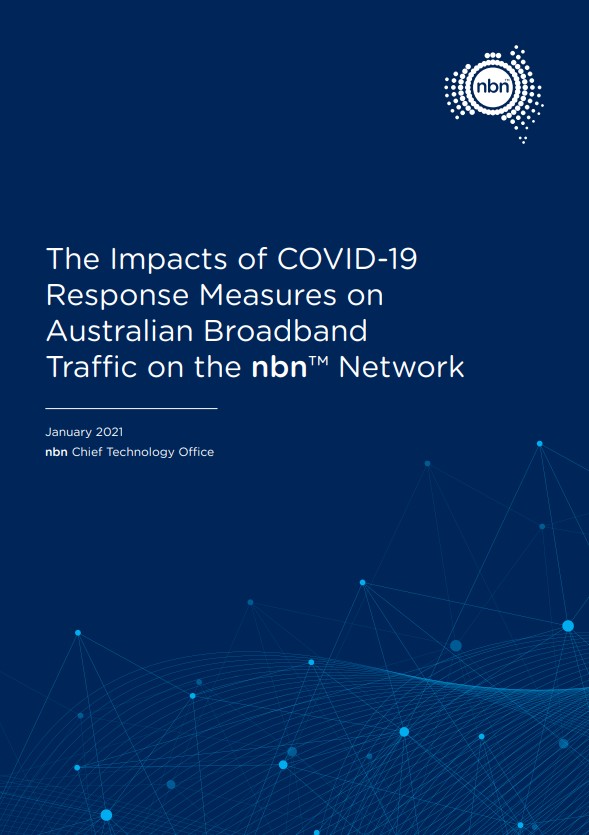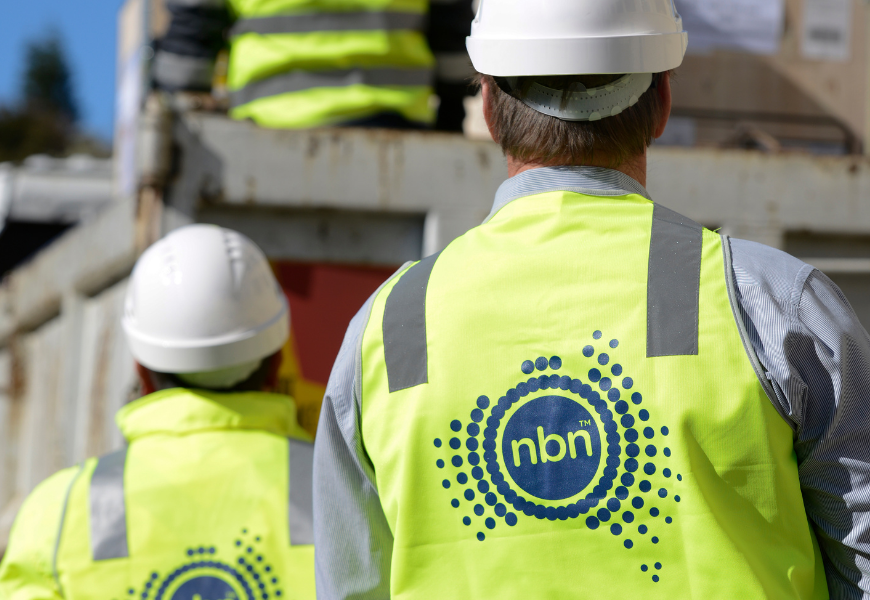nbn and COVID-19: changes, challenges, collaboration
As we watched the COVID-19 pandemic unfold from our then-safe place on the opposite side of the world, it soon became clear that connectivity would have a major role to play in supporting Australia in 2020.
Our nation’s first case of COVID-19 was confirmed on 25 January.
By March, travel restrictions were being introduced, public events cancelled, and many employees and students encouraged to work and learn from the safety of home.
As the operator of Australia’s national wholesale broadband access network, we paid close attention to the developing situation, understanding the role it would need to play to support increased demand from homes and businesses for fast and reliable broadband.
Now, with the tumultuous year having finally drawn to a close, we reflect on the network changes and industry challenges brought about by the pandemic.
Our report, ‘The Impacts of COVID-19 Response Measures on Australian Broadband Traffic on the nbn™ network’, analyses the changes in broadband network traffic in March, April and May 2020.
It aims to help us learn from the COVID-19 experience and – prepare for the worst, hope for the best – ready ourselves for potential future events both in Australia and globally.

Preparing with help from peers
In March, as Commonwealth, state and territory governments began implementing social distancing measures, nbn’s technical and engineering teams began exploring the potential impacts of social distancing measures on Australian broadband network traffic.
It made sense that, with measures including closing public spaces, limiting public gatherings and isolating international arrivals, Australians would soon seek out online ways to stay connected.
That’s also what our industry peers overseas were telling us from experience.

Early engagement with these international colleagues confirmed that network use increased when social distancing measures or lockdowns were implemented.
And, as detailed in our report, the more stringent the isolation measures, the more the relevant network was used.^
For example, countries that moved into stricter lockdown measures – like New Zealand, the United States of America and Spain – experienced higher levels of network use, each having measured growth in their busy hour traffic of more than 30 per cent.^
Three phases of traffic
Analysis of the international experience also revealed three different phases of traffic volume change:
- Phase One: Sudden Increase
- Phase Two: Plateau/Stabilisation
- Phase Three: Varying Rate of Decline
The level of impact and the duration of each phase depended on the length and stringency of the social distancing or lockdown measures in place.

According to the data, once a city or region implemented social distancing or went into lockdown, network use increased suddenly (Phase One).
Then, when the measures remained constant, network use began to plateau and stabilise (Phase Two).
In the third phase, the rate of network use generally declined in line with the extent to which social distancing and lockdown measures were eased, and the level of compliance within the population.^
Changes on the nbn™ network
Just like our overseas counterparts, we observed substantial change to nbn™ network use during the pandemic.
These changes became more pronounced in the second half of March, once formal social distancing measures were introduced, and had demonstrable impacts on nbn™ network use.
This includes substantial peaks in downstream and upstream use, as well as changes to the 24-hour usage profile with substantial growth during the day, growth in data volume, and changes to application usage.
Changes were also influenced by organic increased use by existing nbn customers, as well as seasonal factors and 430,000 new customers added to our network during the analysis period.

Additionally, data volume was moderated by the voluntary bitrate measures implemented by video streaming providers.
Overall, data volume increased by around eight per cent in March compared to a February baseline.^
Despite additional customer demand, we’re pleased to say, the nbn™ network performed well throughout the period.
This is, in large part, due to the proactive steps taken by nbn and collaborative efforts with industry to anticipate changes and demand.
Anticipating changes and demand
Analysis and Modelling
This included engaging with various international peers, as well as analysis and modelling of potential scenarios to help design and implement a management plan.
The results of this analysis were used internally to enable capacity planners to prepare for the predicted changes, and was also shared with phone and internet providers.
Industry Engagement
Understanding our place in the broader industry ecosystem, we worked closely with our telecommunications colleagues to encourage information-sharing and collaboration.
To help enable rapid decision-making and quick collaborative responses to support customer experience, we facilitated discussions through four key industry forums with the ultimate goal to keep Australians connected and productive throughout the pandemic.
Capacity Management
Commercial Response
Readying ourselves for the future
As we look to the future, our sights are firmly set on the next phase of nbn’s evolution.
This includes a $4.5 billion network investment plan, to be funded by private debt and which is forecast to create an additional 25,000 jobs in Australia.
We’ll also be making our highest wholesale speed plans available to more Australians, and have committed up to $300 million to help deliver higher speed broadband services to households and businesses in regional and remote Australia.
You can read more about this next phase in our Corporate Plan 2021.

During the pandemic, in its role as a wholesale-only, open access network operator, nbn was in a unique position to work together with a broader industry ecosystem.
While we all know there is still a way to go until we can say we’ve emerged on the other side of COVID-19, there’s light at the end of the tunnel.
In the meantime, we’ll continue to work closely with our colleagues around the world – and closer to home on our range of network investment initiatives – to ensure the nbn™ network remains ready, willing and able to help support the people of Australia.



